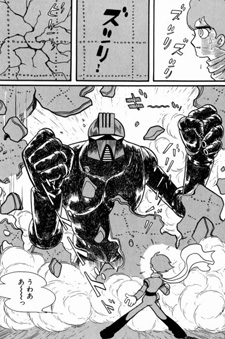

Dragged back to the base of the fatherly Doctor Gilmore in dramatic style, Joe learns that he’s had his memory wiped, and has been kept in temporary stasis as a student until his superhuman services are once again required. When we first meet him, the apparently ordinary Japanese high school kid Joe Shimamura (codenamed 009) is on the cusp of becoming a bomber himself, before he’s rescued from a trance-like funk by his former sweetheart, Francoise. The awkwardly titled (to type, at least) 009 Re: Cyborg is an updating of Shotaro’s concept, bringing its multicultural, multitalented heroes into an edgier, post-9/11 setting. Hugely popular in Japan, Cyborg 009 prompted a string of anime adventures both on the small screen and in cinemas – the most recent TV run ended in 2001.

One of Shotaro’s earlier and longest-running manga was Cyborg 009, which told the story of an international group of cyborg spies who turned against their criminal masters to fight the forces of evil. Simply put, without Shotaro Ishinomori, there would be no Mighty Morphin Power Rangers. A former protégé of the legendary Osama Tetsuka, Shotaro was the creator of such seminal shows as Kamen Rider and Super Sentai, which popularised the entire concept of the transforming (or henshin) superhero television series in Japan. The name Shotaro Ishinomori may not sound too familiar, but his work almost certainly will be, particularly if you have an interest in manga and anime.


 0 kommentar(er)
0 kommentar(er)
